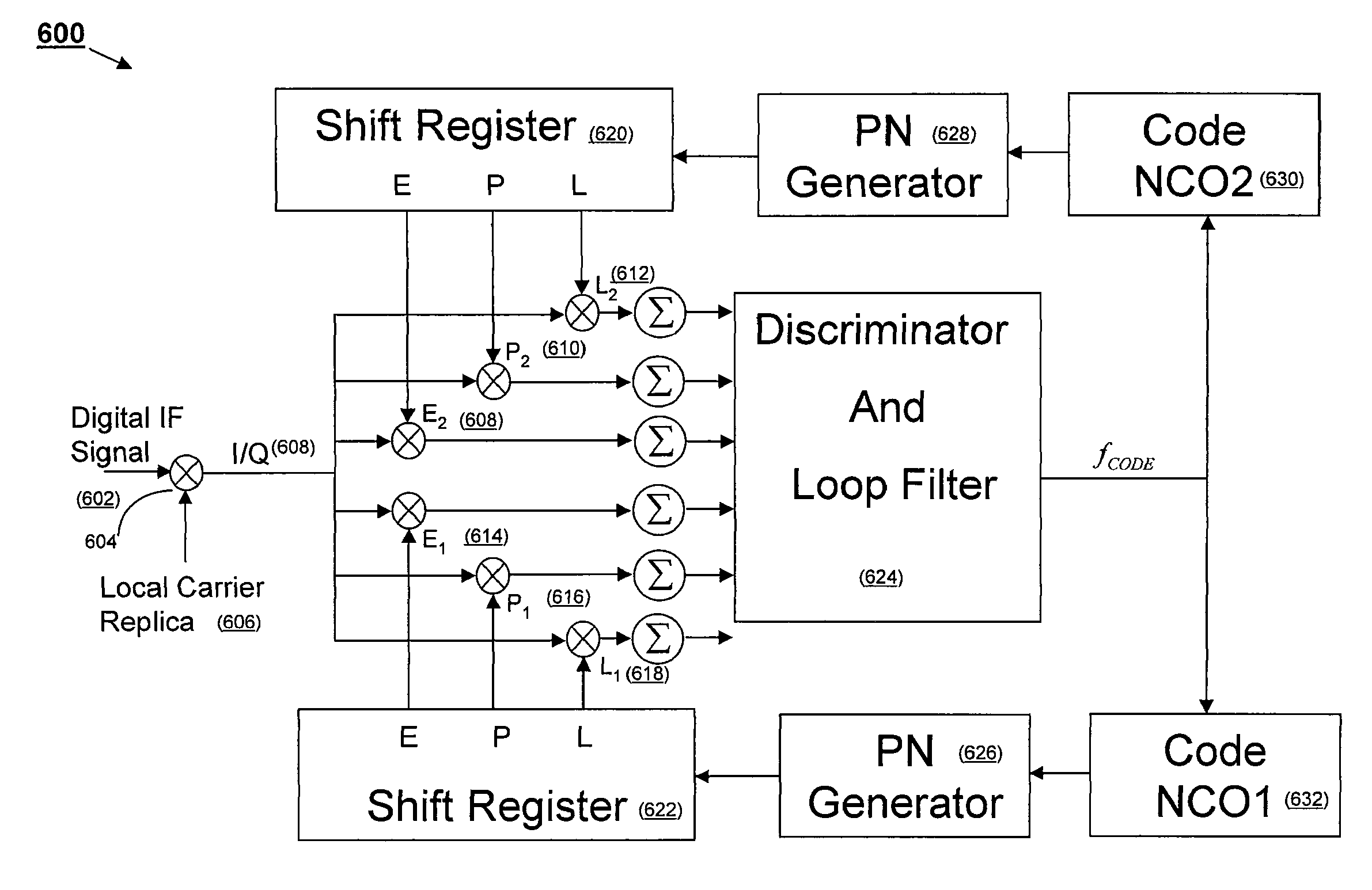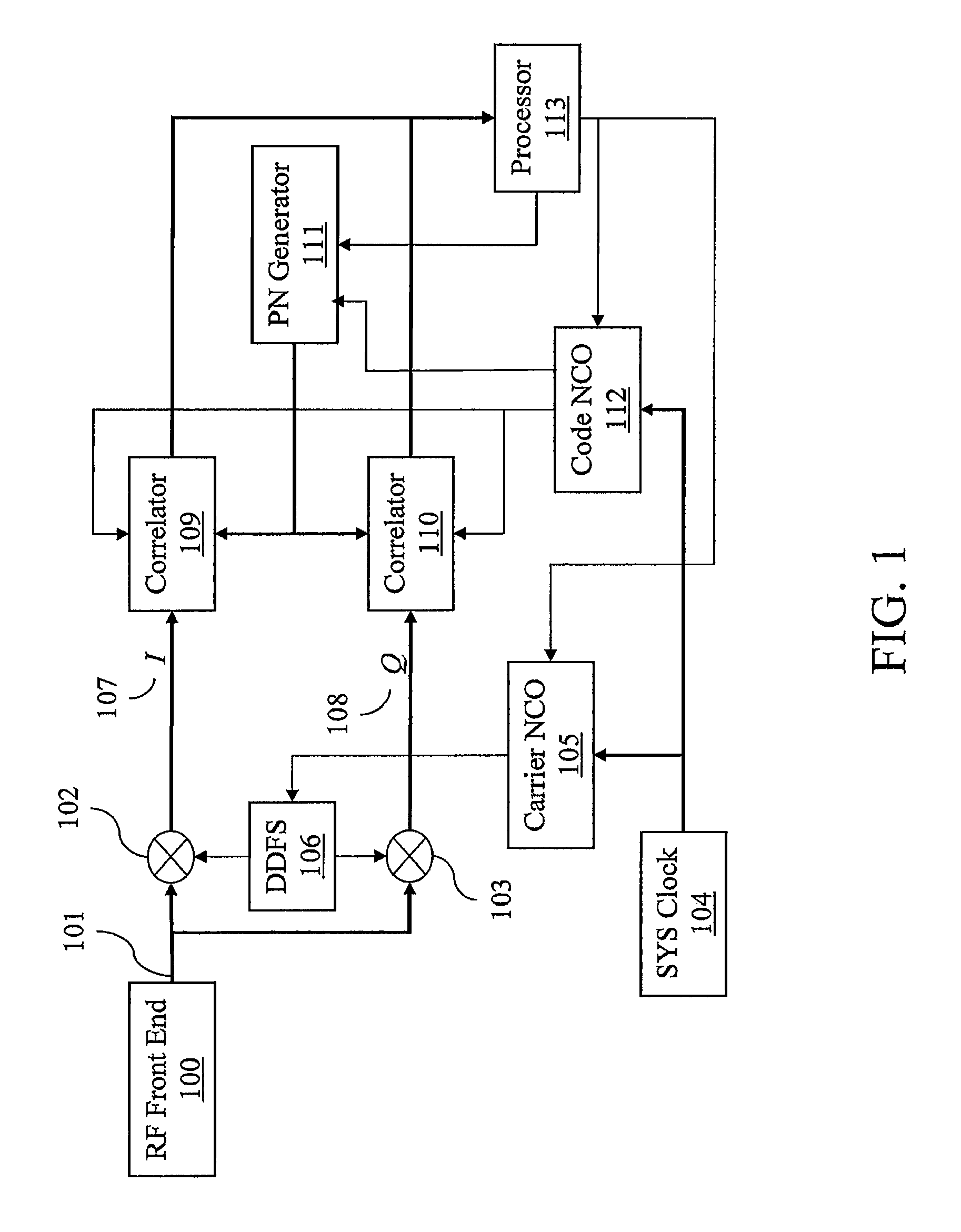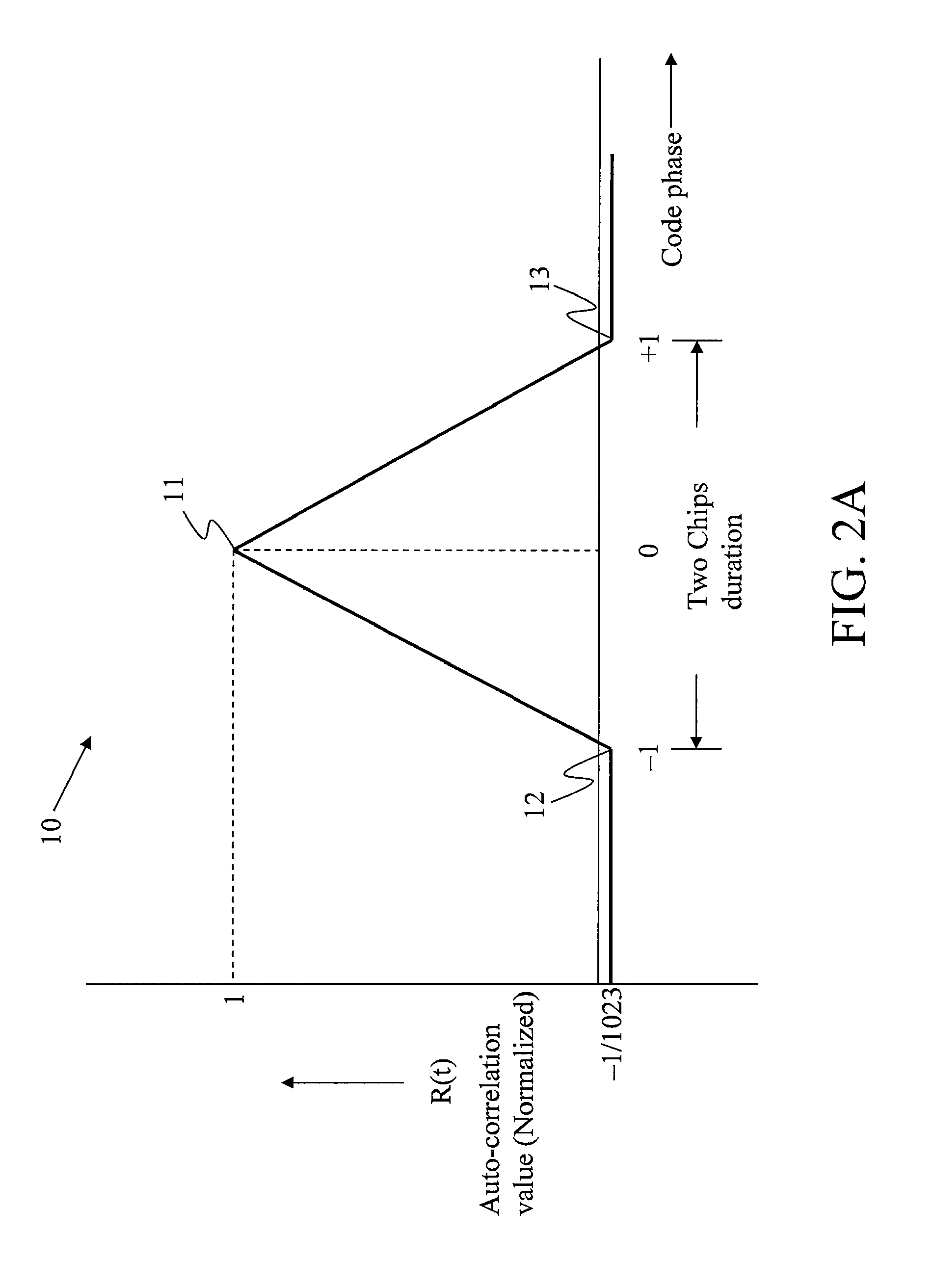Narrow correlator technique for multipath mitigation
a correlator and narrow-band technology, applied in the direction of amplitude demodulation, digital transmission, electrical equipment, etc., can solve the problems of introducing errors in the estimated position of the receiver, estimating the pseudo-range of often contains additional errors, and calculating inaccurate pseudo-ranges. to achieve the effect of mitigating multi-path errors
- Summary
- Abstract
- Description
- Claims
- Application Information
AI Technical Summary
Benefits of technology
Problems solved by technology
Method used
Image
Examples
first embodiment
[0038]The first embodiment is based on a direct implementation. In this method one hardware correlator set can be used to implement both correlator sets. This may be done by having one hardware correlator set operate twice on the same set of stored signal samples at the same code frequency but different code phases to implement both correlator sets. This requires the correlator set to run fast enough to accommodate both sets in one hardware set. The signal samples may be read from the FIFO memory mentioned earlier. While the P1 and P2 provide narrow correlation space, the E1, E2 and L1, L2 provide correlation values for wider correlation space. This is useful to guard against large code delay error, which occurs when the peak is far away from the P1 and P2. In this case, the values of E1, E2 and L1, L2 can be used to find the peak.
second embodiment
[0039]implementation is based on time-sharing of the correlators. In this method, if the correlators can not run fast enough, a time division approach can be used. In one embodiment, one hardware correlator set is used by having the correlator set alternately implement the E1, P1 and L1 set and the E2, P2 and L2 set. For example, the correlator set may implement the E1, P1 and L1 set during odd milliseconds and the E2, P2 and L2 set used during even milliseconds. In this embodiment, the NCO code phase value is suitably updated, e.g., by adding or subtracting a code phase value corresponding to the desired correlator spacing between implementations. Overflow and underflow problems may also need to be taken care of in both methods, which occurs when the result of a code phase adjustment is larger or smaller than the range that the code NCO can represent.
[0040]In an embodiment, a computation of error due to the multipath may be done by determining the profile of the correlation and usi...
PUM
 Login to View More
Login to View More Abstract
Description
Claims
Application Information
 Login to View More
Login to View More - R&D
- Intellectual Property
- Life Sciences
- Materials
- Tech Scout
- Unparalleled Data Quality
- Higher Quality Content
- 60% Fewer Hallucinations
Browse by: Latest US Patents, China's latest patents, Technical Efficacy Thesaurus, Application Domain, Technology Topic, Popular Technical Reports.
© 2025 PatSnap. All rights reserved.Legal|Privacy policy|Modern Slavery Act Transparency Statement|Sitemap|About US| Contact US: help@patsnap.com



